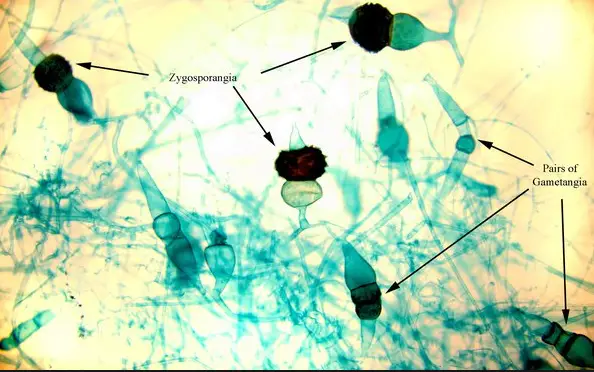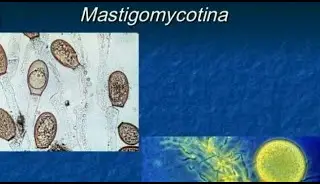Fungi, a kingdom as diverse and complex as any other form of life, includes thousands of species that play essential roles in ecosystems and human industries. Among these, the subdivisions Mastigomycotina and Zygomycota stand out due to their unique characteristics and biological significance. Understanding the distinctions between these groups helps in appreciating the intricate web of life they support.
Mastigomycotina and Zygomycota are two distinct subdivisions within the Fungi kingdom, characterized primarily by their reproductive structures and life cycles. Mastigomycotina are known for their motile spores, which require water to move, whereas Zygomycota produce non-motile spores that grow into new organisms under suitable conditions. This fundamental difference in spore mobility underscores the varied adaptations fungi have evolved to survive and thrive in diverse environments.
The exploration of Mastigomycotina and Zygomycota reveals much about their roles in decomposing organic materials, contributing to nutrient cycling, and interacting with other organisms. Both groups encompass species that are not only vital for ecological balance but also of significant economic and health interest due to their impacts on agriculture and medicine.

Mastigomycotina Overview
Definition and Characteristics
Mastigomycotina is a former subdivision of the fungal kingdom, notable for its unique method of spore dispersal. Unlike many fungi that release spores into the air, species within this group produce motile spores equipped with flagella. These flagella enable the spores to swim through water, an essential feature for their survival and dispersal in moist environments.
Key Features
The key features of Mastigomycotina include:
- Presence of flagella: Spores have one or more flagella that aid in movement.
- Aquatic lifestyle: They thrive in wet environments where water is abundant.
- Plant pathogenicity: Many species are pathogens of plants, causing diseases like downy mildew.
Zygomycota Overview
Definition and Characteristics
Zygomycota, commonly known as zygomycetes, are a class of fungi known for their life cycle that includes the formation of zygospores. These fungi are mostly terrestrial and can be found in soil, on decaying plant and animal matter, and as parasites in insects and small animals.
Key Features
Zygomycota are characterized by:
- Zygospore formation: A thick-walled resting spore that forms when conditions become unfavorable.
- Fast growth: They are known for their rapid growth on suitable substrates.
- Hyphal fusion: Two different mating types can merge their hyphae to form zygospores.
Classification Criteria
Basis for Differentiating
Differentiating between Mastigomycotina and Zygomycota primarily revolves around their reproductive structures and methods of spore dispersal. While Mastigomycotina utilize motile spores for reproduction in aquatic or moist environments, Zygomycota produce stationary zygospores that withstand harsh conditions, germinating when conditions improve.
Role of Taxonomy
Taxonomy plays a crucial role in understanding these fungi by:
- Classifying species based on genetic and morphological data.
- Highlighting evolutionary relationships and ecological roles.
- Providing a framework for studying their biology and interactions within ecosystems.
Habitat and Ecology
Common Habitats of Mastigomycotina
Mastigomycotina are typically found in:
- Aquatic environments: Lakes, ponds, and streams where water facilitates spore movement.
- Moist soils: Especially near water bodies where humidity levels are high.
Common Habitats of Zygomycota
Zygomycota, on the other hand, are adaptable and found in:
- Soil: Rich in organic matter, providing them with ample nutrients.
- Decomposing matter: Both plant and animal, aiding in nutrient cycling.
- Endophytic and parasitic lifestyles: Some species live inside plants or animals without causing harm, while others are harmful.
Reproductive Mechanisms
Mastigomycotina Reproduction
Mastigomycotina reproduce by:
- Producing motile spores: These spores swim to new locations to germinate.
- Water dependence: Their reproductive success is closely tied to the availability of water.
Zygomycota Reproduction
Zygomycota’s reproductive strategy includes:
- Zygospore formation: Occurs when two compatible hyphal strands meet and form a zygospore.
- Asexual reproduction: Commonly through sporangiospores that are spread by wind or contact.

Economic Impact
Benefits of Mastigomycotina
Mastigomycotina, although lesser-known, contribute significantly to biological control and agriculture:
- Disease control in crops: Certain species act as biocontrol agents against plant pathogens, reducing the need for chemical pesticides.
- Biofertilizers: Some species enhance soil fertility by decomposing organic material and releasing essential nutrients.
Benefits of Zygomycota
Zygomycota play a vital role in various economic activities:
- Food industry: They are crucial in the fermentation of foods like tempeh, a protein-rich food made from fermented soybeans.
- Biodegradation: Their ability to decompose organic waste is used in composting processes, turning waste into valuable compost for agriculture.
- Biomedical uses: Research has shown potential in using zygomycetes for producing bioactive compounds that can be used in medicine.
Negative Impacts
Despite their benefits, these fungi can have detrimental effects:
- Crop damage: Both groups can cause diseases in crops, leading to significant agricultural losses.
- Health risks: Certain zygomycetes are known to cause infections in humans, particularly in immunocompromised individuals.
Health and Disease
Mastigomycotina Related Diseases
Mastigomycotina are primarily known for their impact on agriculture:
- Downy mildew: Affects a wide range of plants, causing severe impacts on crops like grapes, potatoes, and ornamentals.
- Fish diseases: Aquatic species can infect fish, leading to outbreaks in aquaculture.
Zygomycota Related Diseases
Zygomycota, while useful, can be dangerous:
- Mucormycosis: This serious fungal infection can affect the lungs, brain, and skin in humans, with a high mortality rate.
- Plant rot: Causes rot in various fruits and vegetables, leading to post-harvest losses.
Research and Studies
Recent Discoveries
Recent research has unveiled new insights into these fungi:
- Genome sequencing: The sequencing of various zygomycete genomes has provided deeper understanding of their biology and adaptation mechanisms.
- New bioactive compounds: Studies have identified novel compounds in zygomycetes that have potential applications in drug development.
Future Research Directions
The future of research in these fungal groups is promising:
- Environmental sustainability: Exploring the use of these fungi in bioremediation to clean up contaminated environments.
- Health solutions: Developing new antifungal treatments from bioactive compounds found in these fungi.
- Agricultural advancements: Enhancing the use of biocontrol agents to reduce dependency on chemical pesticides and fertilizers.
Frequently Asked Questions
What are Mastigomycotina?
Mastigomycotina, often less commonly known, are a group of fungi characterized by their production of flagellated spores, requiring aquatic or very moist environments to thrive. This feature distinguishes them from most other fungi, reflecting their specialized ecological niches.
How do Zygomycota reproduce?
Zygomycota reproduce through a process called zygospore formation, where two different fungal hyphae merge and form a resting spore. This method is significant for its role in enabling the fungi to survive in unfavorable conditions until more suitable environments are present.
What is the economic impact of Zygomycota?
Zygomycota fungi are crucial in various industrial processes, including the production of fermented foods and bio-degradable products. Their ability to decompose organic matter also makes them valuable in agricultural settings, aiding in soil fertility and waste decomposition.
Can Mastigomycotina cause diseases?
Yes, certain species within the Mastigomycotina group are pathogenic to plants, causing diseases like downy mildew. These diseases can significantly impact agricultural productivity, highlighting the need for effective fungal management strategies in susceptible crops.
Conclusion
This exploration of Mastigomycotina and Zygomycota sheds light on the profound differences that not only define their biology but also their ecological and economic roles. Their distinct reproductive strategies—motile spores in aquatic environments versus stationary spore formation in terrestrial settings—illustrate the adaptive evolution within the fungal kingdom.
Understanding these differences enhances our appreciation of fungal diversity and its implications. As researchers continue to unearth the secrets of these fungi, their knowledge promises to drive innovations in agriculture, medicine, and environmental management, showcasing the power of fungal biology in shaping our world.

